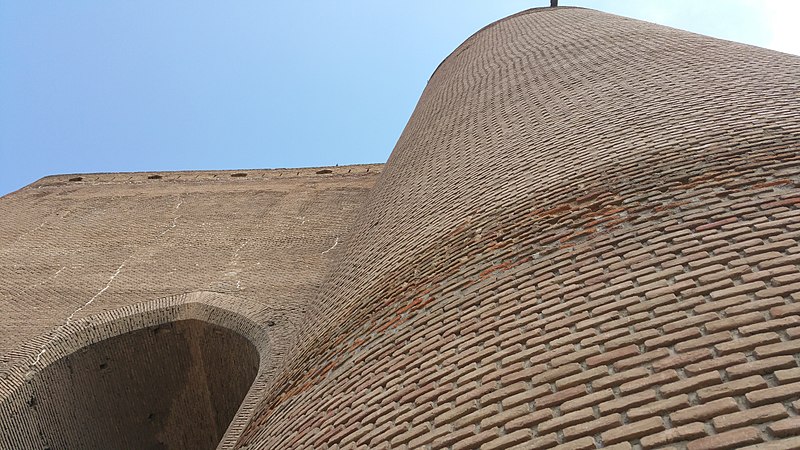Ark-Alishah of Tabriz is located in downtown; this magnificent Ilkhanian brick building named Ark-E Tabriz, Ark-E Alishah, Alishah Mosque. Regarding the archaeological researches, this work started in 1315 and it hasn’t finished ever.
At the same time as the beginning of the Iran-Russia Wars of 1804-1813, the Ark-E-AliShah zone was reconstructed as a military compound. The discovery of the furnace of warfare instrument in exploration explains this claim. In some narratives, Tabriz’s Ark was used as a market for weapons and ammunition.

In recent decades, the Qajar has transformed some of the towers and rains built around the Ark into the garrison of the city. This building witnessed the struggle of the constitutional revolutionaries, was used as a castle for the city in 1931. The structure was listed on the National Iranian Monuments List and ended its military use.
Before the excavations in 1971, Ark is known as the “Anonymous Soldier” monument. Since 2002, these buildings and its premises have been used as a prayer hall of the city.
The plan of this integrated brick structure is U-shaped. According to the architectural arguments, this structure has not categorized in any of the types of the mosque.
The highest and one of unique alters of Islamic Muslim world by 30 meters without any tile-work and embellishments has taken place in the body of great Ark.

Regarding the documents and historical traditions, Ark couldn’t be part of Ali-Shah masque. This mosque was a brilliant marble complex with golden alert and huge pool.
The remains of the Ark of Tabriz are an extension to the old monument in northern Ark. It is evident from the architectural and historical findings that Abu-Saeed developed the Ark-E Alishah Mosque to respect of the Ark-E Alishah service after the completion of the building, and the alteration of the architectural design of this building and the annexation of the current portal Ark could be made with the aim of appropriating the tomb to Abu Saeed or his burial be near Ark-E Alishah is the minister. However, Iranian historians have just mentioned the burial of Ali Shah in this collection.
It can be concluded that the remains of the Ark-E Alishah in Tabriz are related to the added part of Ali-Shah, which lies in the north with a rectangular plan, two minarets and long lines in the direction of Mecca. Because of unknown reasons, the resting place of the design and with the accession of a high-pole on the south (Qibla) is part of the Ark-E Alishah architectural complex, where the Alishah mosque is located on its eastern side.

